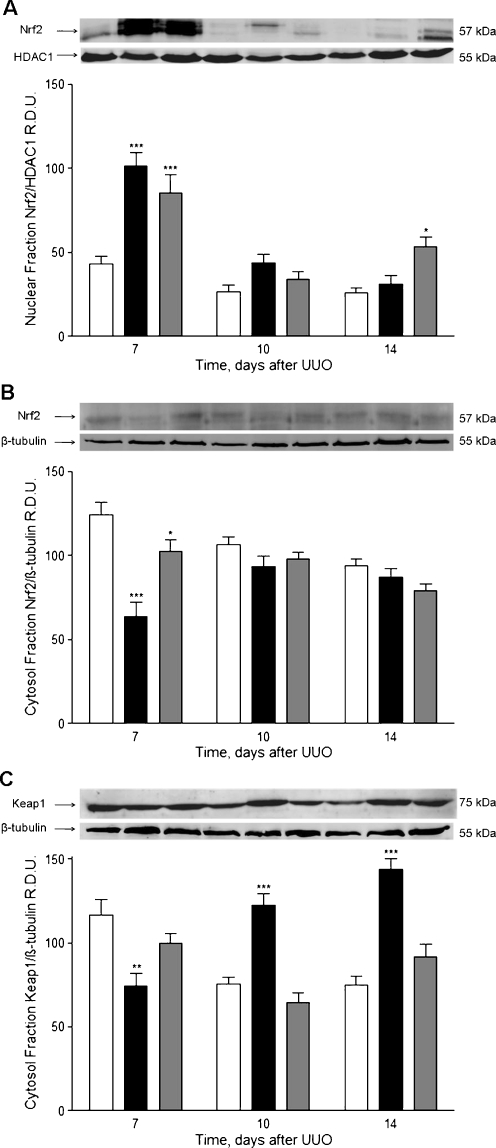Fig. 6.
Time course of the Nrf2–Keap1 cellular defense pathway in neonatal unilateral obstruction. Cortex homogenates from obstructed, contralateral, and control kidneys were isolated and fractionated into nuclear and cytosol extracts (see the “Materials and methods” section). Equal amounts of protein extracts were loaded in each lane, resolved by SDS-polyacrylamide gel electrophoresis, and probed for Nrf2 (nuclear and cytosol extracts) and Keap1 (cytosol extract) by immunoblot analysis. As loading controls, cytosol extracts were probed for β-tubulin and nuclear fractions were probed for HDAC1. Densitometric analysis revealed Nrf2 higher abundance in nuclear cortex fraction (a) from 7-day obstructed kidney vs. control, ***p < 0.001 and contralateral nuclear fraction vs. control, ***p < 0.001. In contrast, in cytosol cortex fraction (b), decreased Nrf2 expression was shown in 7-day obstructed kidney vs. control, ***p < 0.001. Prolonged obstruction for 14 days blunted nuclear translocation of Nrf2 whereas increased cytosol Nrf2 protein level was shown. Keap1 is a negative regulator of Nrf2. Lower cytosol Keap1 (c) protein abundance was shown in 7-day obstructed kidneys vs. control, **p < 0.01. Conversely, increased Keap1 expression was shown in cytosol fractions (c) from 10- to 14-day obstructed kidneys vs. control, ***p < 0.001 both. Data represent the mean ± SEM; n = 4

